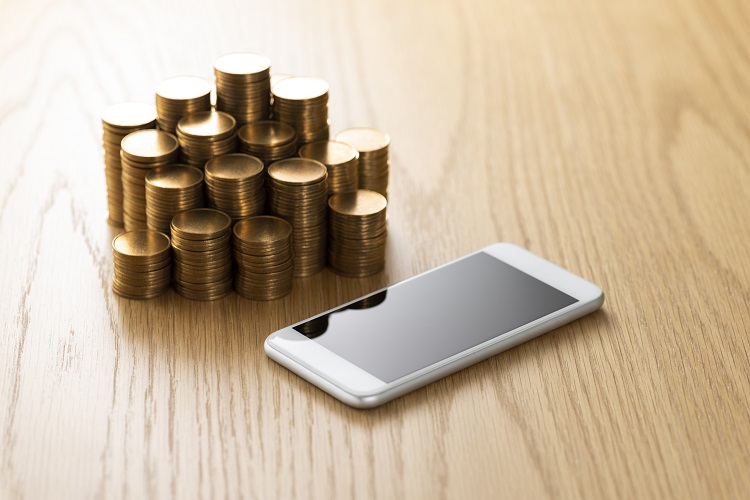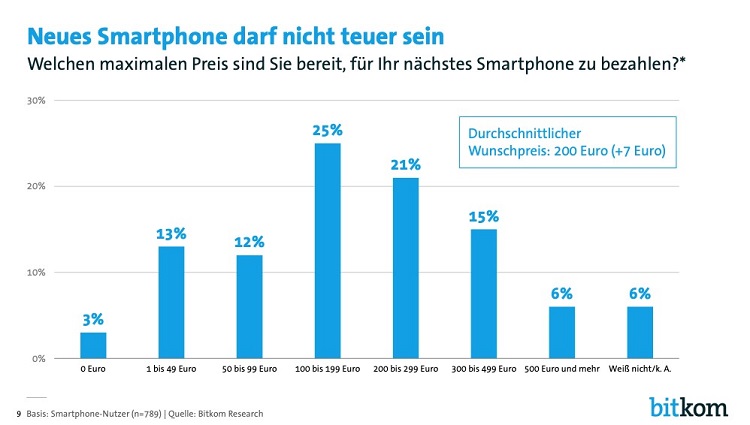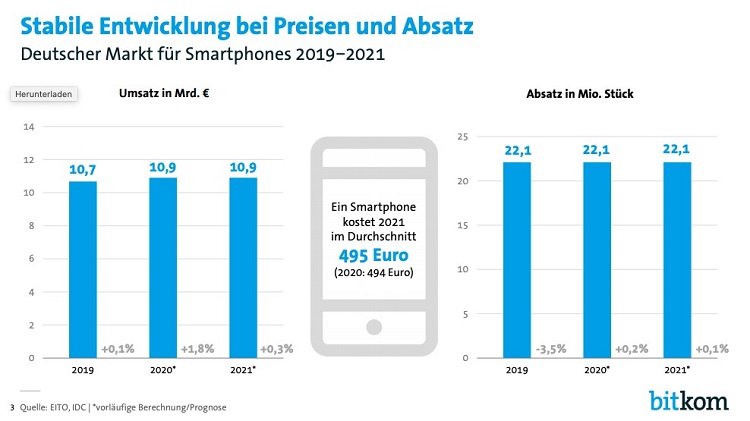 Source: iStock.com/kuppa_rock
Source: iStock.com/kuppa_rock
How much can a smartphone cost?
7. July 2021 Published by Raphael Doerr88 percent of Germans state they can no longer imagine life without a smartphone, according to the latest Bitkom report on the smartphone market. Many even feel a smartphone is more important than a new car. There is no other device that Germans are more willing to splash out on. According to Bitkom, shoppers spent an average of €352 for a smartphone in 2017.
Yet hardly anyone is willing to pay that much in 2021. 25 percent of Germans only want to spend an average of just €200 on a new model. That is the conclusion of the recent report on the smartphone market published by the German digital association Bitkom.

The first-ever mobile phone cost €8,000
According to a survey by the industry association gfu from May 2019, the majority of users normally spent €100 to around €400 (48 percent of respondents). 14 percent paid less than €100. 19 percent forked out between €400 and around €600. And 14 percent were willing to pay between €600 and around €800 for a new device. Just seven percent of participants in the survey paid more than €800. If you bear in mind what buyers were prepared to buy for the first mobile phone, the Motorola DynaTAC 8000X, in 1983, then €500 is a knock-down price. The first-ever mobile phone went on sale for the princely sum of $4,000 (allowing for inflation, that is now equivalent to $9,600 or €8,000). Yet the price tag didn’t deter many people: 300,000 snapped up one in the first year after its launch.
Germany: average price of €495 for a smartphone
The average price for a new smartphone is now €495, roughly at the level of 2020. The survey reveals that some 63 percent of respondents purchased their smartphone in the past 12 months and even 26 percent in the last six months. 88 percent said that price played a significant role in their decision.

The display, battery and performance are key factors
However, the other criteria are also interesting: 91 percent pay particular attention to the quality of workmanship and state that a rugged display is important. Battery life is also a crucial factor for 88 percent when buying a smartphone.
The size of the internal memory in their next phone is a major criterion for 80 percent. Just over two-thirds (68 percent) said that the quality of the camera was important. A similar number (63 percent) want their next smartphone to be 5G-compatible. More than one in two (57 percent) regard facial recognition as essential. In comparison, just over half (55 percent) do not feel that the device’s brand is crucial.
Smartphone: Sustainability as a criterion
At the same time, just about all users stress that they pay great attention to sustainability aspects when it comes to buying a smartphone. This issue is important for 92 percent. Sustainability, eco-friendly attributes and production processes are growing in importance.
Taking the results of this recent Bitkom report as a measure of what buyers demand from a new smartphone, the latest devices from Gigaset not only score well in terms of price, but also in all other areas.
Impressive display and battery
16 cm and no end: The 6.3” full-HD+ display of the GS4 delivers an almost boundless visual experience with its 16 cm diagonal. And the brand-new Gigaset GX290 plus is equipped with Corning Gorilla Glass 3. This covering has a scratch-resistant and dirt-repellent surface and is rugged enough to withstand thermal shocks unscathed. In addition, the adaptive display means it can even be read in particularly bright lighting conditions – making it ideal for outdoor activities. The battery of the latest Gigaset GS4 smartphone model (4300 mAh lithium polymer battery) offers a talk time of up to 25 hours in the 3G/4G network and a standby time of 350 hours when one SIM card is used. What’s more, users themselves can replace the battery in just a few easy steps without having to send in the smartphone – Gigaset sees that as an important aspect in enhancing sustainability.
For greater sustainability
Gigaset has addressed the issue of sustainability for a long time – from recycling of production materials to technological innovations and logistics processes. All the packaging for the new smartphone generation consists of recyclable, compostable grass fibers. This rapidly renewable raw material is obtained from local sources, produces far less CO2 emissions, and also needs much less water and energy to make. For the packaging of the Gigaset GS3, we are committed to complying with the latest environmental standards (FSC certification) and compensating for the CO2 emitted in production by supporting projects by our climate partners.
Moreover, the company has dispensed completely with plastic inside the packaging, apart from the adhesive film to protect the display.
Take a look for yourself and visit our online shop.
 Comments
Comments

 en
en 







